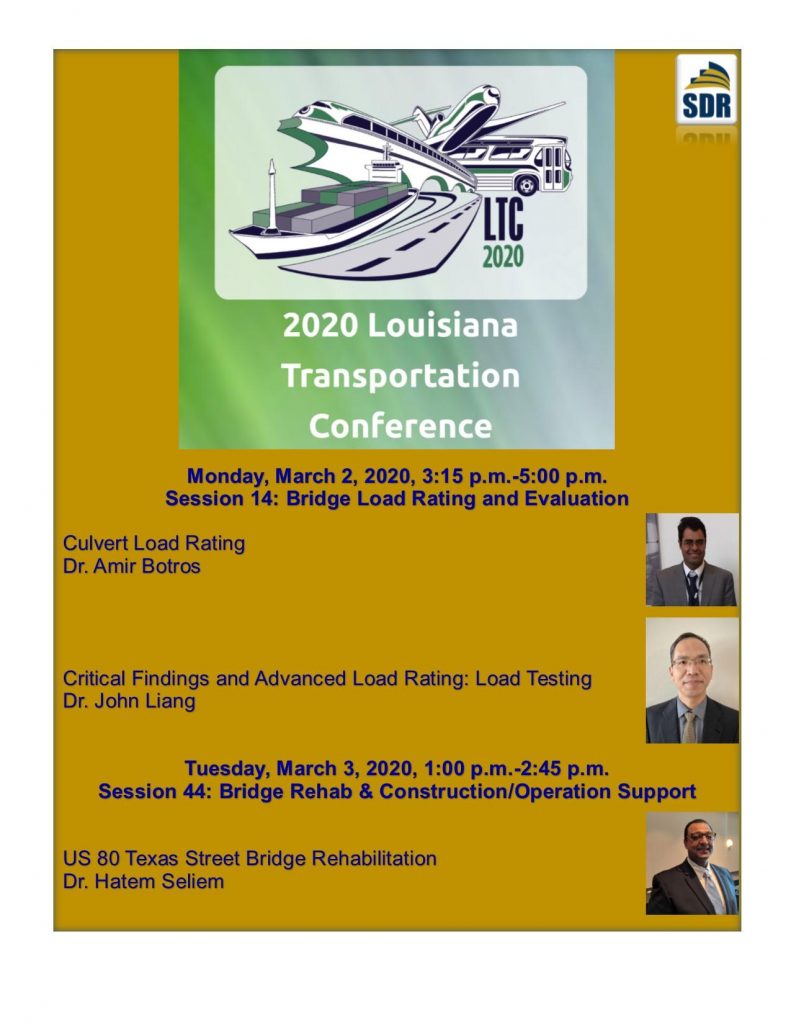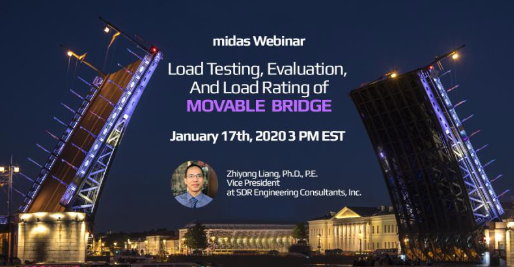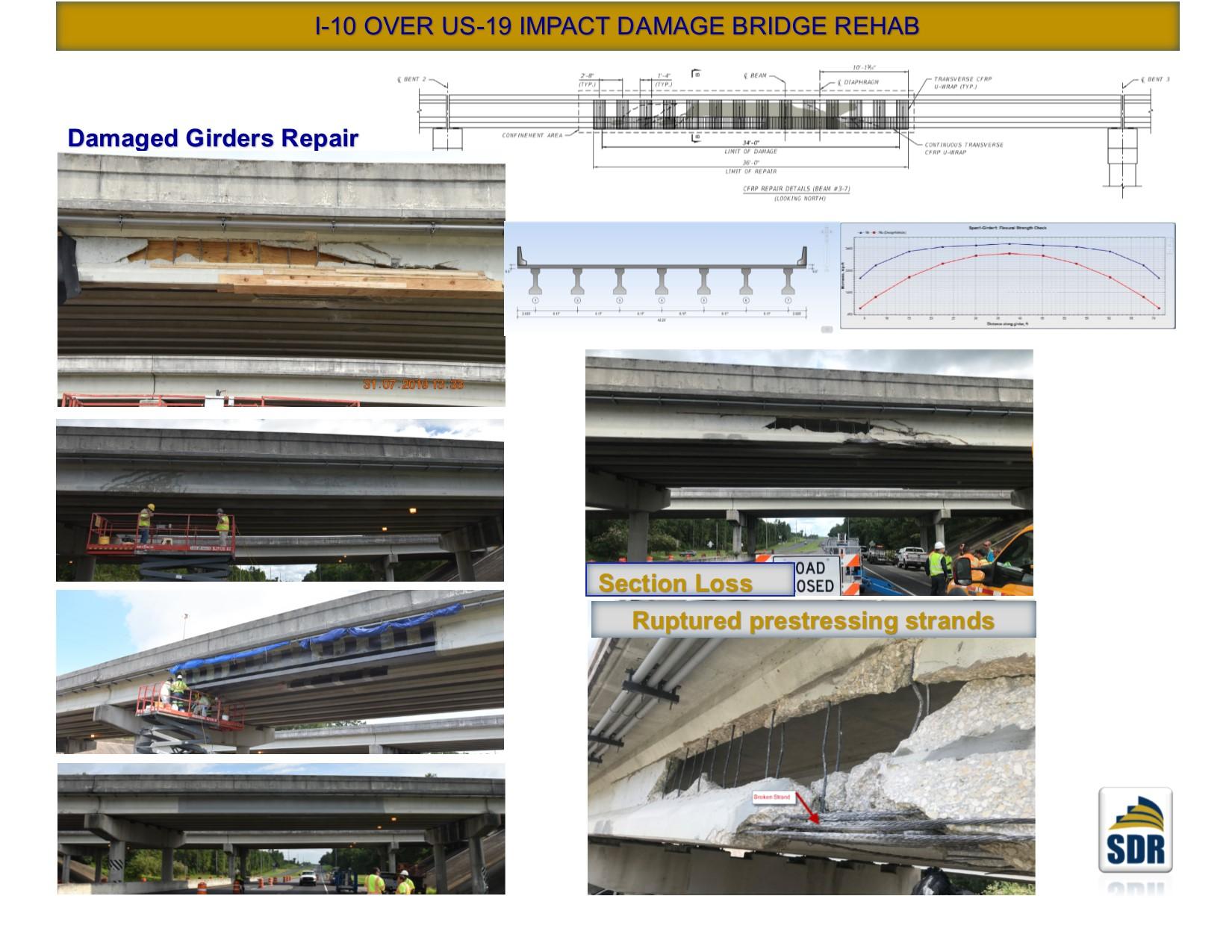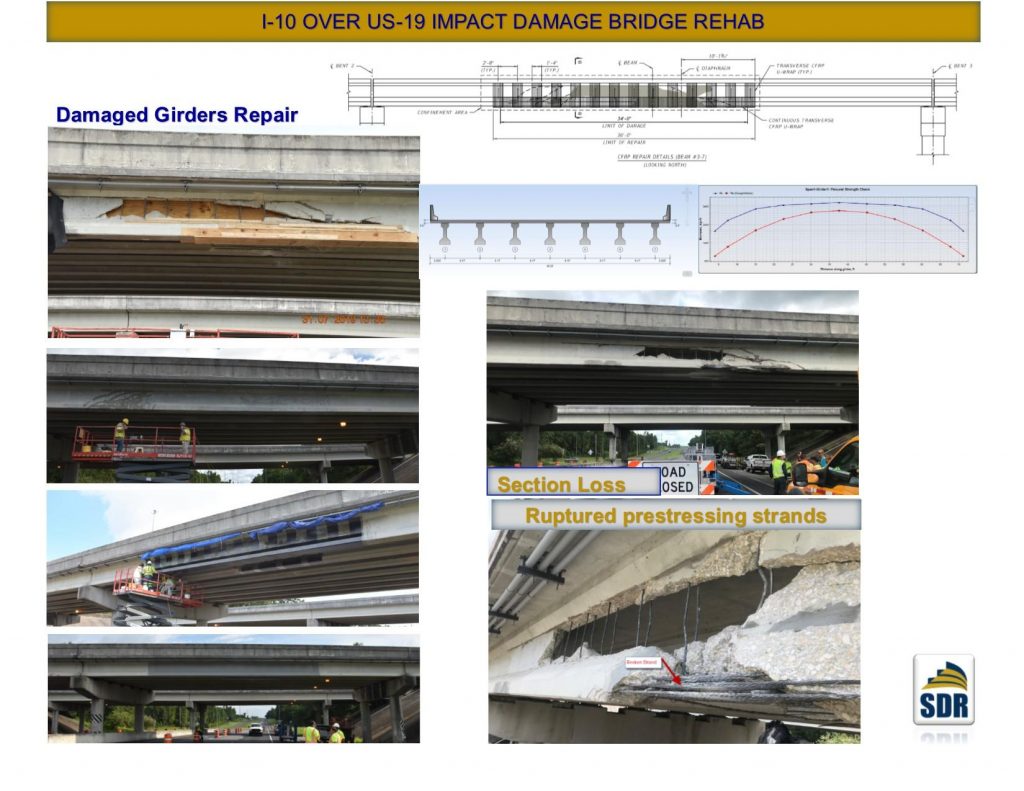Join our upcoming webinar with Hatem Seliem, Ph.D., PE, PMP, Senior Structural / Bridge Engineer & Project Manager at SDR Engineering Consultants, Inc. and Mahmoud Reda Manaa, Ph.D., Engineer II at SDR Engineering, Inc.
We will discuss “Best Practices When Considering Post-Tensioned Girder Bridges”
Continuous post-tensioned bridges are very efficient structures. By eliminating the need for deck joints, this requires less maintenance, which is a significant saving in the long-term. Precast prestressed concrete (PPC) girder bridges are made continuous by using cast-in-place closure joints combined with continuous draped post-tensioning tendons. The webinar will present the proper modeling of continuous post-tensioned girder bridges utilizing staged construction for the time dependency. And checking the load rating by using the resulting internal forces received from the detailed finite element analysis.
Save the date and register for the webinar! Check out this link to see the details https://hubs.ly/H0nND7v0





















